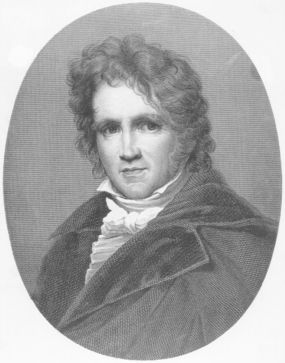Centauri Dreams‘ fascination with the history of science occasionally yields to forgetfulness. Which is why this piece on German mathematician and astronomer Friedrich Wilhelm Bessel, runs two days after his birthday rather than on the occasion itself. Bessel (July 22, 1784 – March 17, 1846) would go on to perform remarkable work in the study of stellar distances that in many respects anticipated the work of today’s exoplanet hunters. He became, in fact, the first person to predict the existence of an unseen companion around another star.

That was quite an accomplishment in 1844, when Bessel announced the find around Sirius, based on minute deviations in the motion of the star. The discovery would be verified by Alvan Graham Clark in 1862 with the first observations of Sirius B. We now know that Sirius B orbits the primary at a distance of roughly 20 AU, not so far off the 23.7 AU mean separation between Centauri A and B, although there the resemblance stops — Sirius B is a white dwarf, at 12,000 kilometers in diameter much smaller than the A-class star it circles.
Bessel goes down as well for making the first measurement of the distance of a star other than the Sun. The method was parallax, observing the relative motion of the star 61 Cygni from both sides of the Earth’s orbit around Sol. His studies of 61 Cygni demonstrated that it had the greatest proper motion of all stars whose motion he could calculate. He worked out a distance of roughly 10 light years, not so far off the 11.1 light year distance now estimated for the star.
61 Cygni, a relatively dim object, made an interesting choice given far brighter and more nearby objects. At the Royal Observatory at the Cape of Good Hope in South Africa, a Scottish lawyer named Thomas Henderson began studying the Alpha Centauri system, the third brightest star after Sirius and Canopus. Henderson’s calculations of Alpha Centauri’s 41 trillion kilometer distance were actually complete before Bessel’s announcement about 61 Cygni was made but the latter’s work was circulated first. At the same time, Friedrich Georg Wilhelm Struve had measured the parallax of Vega, a converging of talent and interest at a propitious time for astronomy.
A final thought: The early work with parallax reminds us of the fact that while the method works for nearby stars (up to about 200 light years) it fails with more distant objects that show no apparent motion in the six months between observations. One virtue of a deep space probe like Claudio Maccone’s FOCAL platform would be that at 550 AU from the Sun, FOCAL could deliver a much longer baseline for calculating stellar distances. Extend that baseline to the Centauri system and you have a precision tool for mapping our part of the galaxy.

